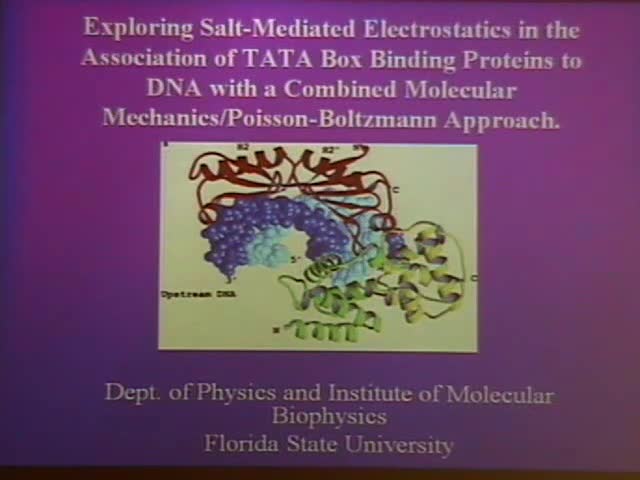Exploring Salt-mediated Electrostatics in the Association of TATA Binding Proteins to DNA with a Combined Molecular Mechanics/Poisson-Boltzmann Approach
Presenter
September 20, 2007
Abstract
Joint work with Johan H. Bredenberg and Cristina Russo
(Institute of Molecular Biophysics, Florida State University,
Tallahassee).
TATA box binding proteins (TBPs) from hyperthermophilic and halophilic organisms, e.g. Pyrococcus woesei (Pw), function optimally at high temperatures and/or salt concentrations. Such proteins associate to DNA with different mechanisms than their mesophilic homologues. Halophilic TBPs sequester cations while mesophilic (Greek, meso – intermediate) TBPs may both release and sequester ions from the DNA ion atmosphere upon association. Our results from a Molecular Mechanics/Poisson Boltzmann computational study on the binding of mesophilic and halophilic TBPs to DNA, suggests that the widely used oligocationic binding model for describing nucleic acid association to charged ligands may not depict the whole association process when acidic residues such as Asp and Glu are found in the binding interface. Instead, the distribution and the total number of charged residues may be the main underlying contributor in the association process, since the little correlation between the widely used ion-pair rule and the salt dependence of binding is found in these kind of systems. We also compare the linear and non-linear solution to the Poisson-Boltzmann Equation and find that the latter is in better agreement with experimentally observed differences in the salt dependence of DNA-binding to mesophilic and halophilic TPBs.
